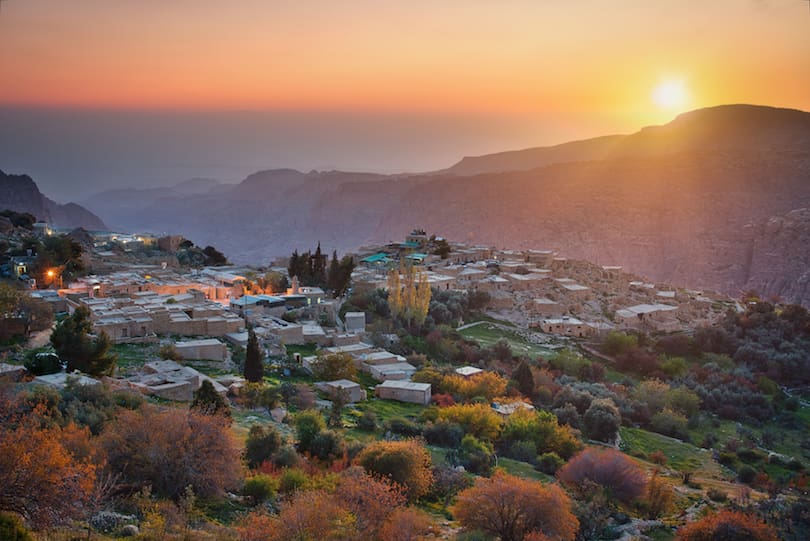Welcome to the mystical land of Gangotri – the origin of the Ganges. Nestled in the majestic Himalayas, Gangotri is a place of immense spiritual and cultural significance in India. This article will take you on a journey to explore the sacred town of Gangotri, the mighty Ganges River, and the fascinating mythology surrounding its origin. Join us as we delve into the natural beauty, religious fervor, and the captivating legends that make Gangotri a must-visit destination for seekers of spirituality and nature enthusiasts alike.
The Sacred Town of Gangotri
2.1 A Journey into Spirituality
When you set foot in Gangotri, you embark on a profound spiritual journey. Surrounded by snow-capped peaks and pristine nature, the town exudes an ethereal ambiance that touches the hearts of pilgrims and travelers. Gangotri is considered one of the Chota Char Dham, the four holy abodes in the Himalayas, and draws devotees from all over the world seeking spiritual solace and blessings from the divine Ganges.
2.2 Mythology and Legends
Mythology weaves its magic in Gangotri, enhancing the allure of this sacred place. According to Hindu mythology, the Ganges River is believed to be the descent of the goddess Ganga from heaven to earth. The story of King Bhagirath’s penance and his quest to bring the divine river to earth forms the cornerstone of Gangotri’s mythology. Legends of gods, demons, and celestial beings intertwine to create a tapestry of faith and devotion.
2.3 The Holy Gangotri Temple
At the heart of Gangotri lies the ancient Gangotri Temple, dedicated to Goddess Ganga. Built in the 18th century, the temple is an architectural marvel adorned with intricate carvings and a vibrant aura. Pilgrims flock to this revered site to offer prayers, seek blessings, and witness the daily aarti (ritual worship). The temple’s sanctity and serenity make it an ideal place for introspection and deep connection with the divine.
2.4 Festivals and Celebrations
Gangotri comes alive with vibrant festivals and celebrations throughout the year. The most significant festival is the Gangotri-Ganga Dussehra, celebrated in autumn to mark the descent of the river to earth. Devotees gather in large numbers, participating in processions, cultural programs, and religious ceremonies. The air is filled with devotion and a sense of jubilation during these festive occasions, making it a memorable experience for all.
The Mighty Ganges River
3.1 The Lifeline of India
The Ganges, often referred to as the lifeline of India, holds immense cultural, historical, and ecological importance. Originating from Gangotri, it flows through the northern plains, nurturing millions of people and serving as a source of livelihood. The river has played a pivotal role in shaping Indian civilization, influencing art, literature, and spiritual practices. Its waters are considered sacred and purifying, attracting devotees and tourists alike.
3.2 Geographical Significance
Stretching over 2,525 kilometers, the Ganges traverses diverse landscapes, from the lofty peaks of the Himalayas to the fertile plains of northern India. Its tributaries and distributaries create a vast network of water bodies that sustain agricultural activities and provide habitat for various flora and fauna. The Ganges basin is home to numerous species, including the endangered Gangetic dolphin and the iconic Gharial.
3.3 Cultural and Religious Importance
The Ganges holds deep cultural and religious significance for the people of India. It is believed to cleanse sins and bestow spiritual liberation. Bathing in its holy waters is considered auspicious, and pilgrims flock to its banks to perform sacred rituals and ceremonies. The river is also associated with several Hindu deities and is revered as the mother goddess, symbolizing purity, fertility, and sustenance.
3.4 Environmental Concerns
Despite its spiritual and cultural prominence, the Ganges faces environmental challenges. Rapid urbanization, industrial pollution, and human activities have led to increased contamination of its waters. Efforts are being made to restore the river’s health through initiatives such as the Ganga Action Plan and Namami Gange program. These endeavors aim to address pollution, conserve biodiversity, and promote sustainable practices to protect the Ganges for future generations.
The Mystical Origin of the Ganges
4.1 The Legend of King Bhagirath
The legend of King Bhagirath lies at the heart of the Ganges’ mystical origin. According to Hindu mythology, King Bhagirath embarked on a rigorous penance to bring the divine river to earth, seeking redemption for his ancestors. Through his unwavering devotion and determination, he pleased Lord Brahma, who granted his wish and guided the river’s descent from heaven. This tale showcases the power of faith and the triumph of human spirit over adversity.
4.2 The Divine Descent
As the Ganges descended to earth, Lord Shiva captured its mighty force in his matted locks to prevent the immense impact from devastating the land. Thus, the river meandered through Shiva’s locks, gradually flowing into the Himalayas and creating the sacred confluence known as Devprayag. This divine act not only saved the earth from destruction but also sanctified the river, endowing it with extraordinary spiritual energy.
4.3 The Sacred Stone
At Gangotri, a sacred stone called the Bhagirath Shila stands as a symbol of King Bhagirath’s penance and the Ganges’ descent. Pilgrims gather around this stone to offer prayers and seek blessings. It is believed that touching the Bhagirath Shila absolves one of their sins and purifies the soul. This mystical stone holds profound significance, connecting devotees to the divine and the rich mythology of the Ganges.
Journey to Gangotri
5.1 Exploring the Himalayas
Gangotri offers a gateway to the majestic Himalayan range, enchanting adventurers and nature enthusiasts. The rugged terrain, snow-capped peaks, and alpine meadows create a paradise for trekkers, mountaineers, and photographers. Whether you are an experienced climber or a novice hiker, the Himalayas present a multitude of trails and expeditions, each offering breathtaking vistas and a chance to connect with nature’s magnificence.
5.2 Trekking Routes
Gangotri serves as a base for several exhilarating trekking routes that cater to different skill levels. The Gaumukh Tapovan Trek, one of the most popular trails, takes you to the source of the Ganges and offers panoramic views of the surrounding peaks. The Kedar Tal Trek, Auden’s Col Trek, and Gangotri-Kedarnath Trek are other notable routes that immerse you in the awe-inspiring beauty of the Himalayas.
5.3 Adventure Sports
For adrenaline junkies, Gangotri provides ample opportunities to indulge in adventure sports. Rafting in the tumultuous Ganges rapids, known for its thrilling white-water stretches, is an unforgettable experience. The rugged terrain also attracts rock climbers and rappellers, who can test their skills on the cliffs and crags around the region. Camping, paragliding, and skiing are additional activities that offer a unique perspective of Gangotri’s natural splendor.
5.4 Wildlife and Natural Beauty
Gangotri and its surroundings are home to a rich variety of flora and fauna. The Gangotri National Park, a UNESCO World Heritage Site, is a haven for wildlife enthusiasts. Here, you can spot Himalayan tahr, musk deer, snow leopard, and a myriad of bird species. The lush green meadows, blooming flowers, and cascading waterfalls paint a picturesque landscape that captivates the senses and rejuvenates the soul.
Gangotri – A Spiritual Retreat
6.1 Spiritual Practices and Rituals
Gangotri offers an abundance of spiritual practices and rituals that provide solace and inner peace. Taking a dip in the icy waters of the Ganges, known as Ganga Snan, is believed to cleanse one’s sins and bestow spiritual blessings. Many devotees engage in prayers, chanting mantras, and performing aarti at the Gangotri Temple to connect with the divine presence and experience a sense of transcendence.
6.2 Meditation and Yoga
The serene and tranquil environment of Gangotri serves as an ideal backdrop for meditation and yoga. Many spiritual seekers and yogis visit Gangotri to delve deeper into their practice and tap into the profound energy of the region. Meditating amidst the Himalayan peaks and the gentle flow of the Ganges can elevate one’s spiritual experience, promoting clarity, mindfulness, and inner transformation.
6.3 Seeking Inner Peace
Gangotri’s serene ambiance and untouched natural beauty create an atmosphere conducive to introspection and self-reflection. The peaceful surroundings inspire seekers to delve into their inner realms, seeking answers to life’s deeper questions and finding solace in the lap of nature. The rhythmic flow of the Ganges and the mighty mountains instill a sense of awe and humility, reminding us of the impermanence of life and the importance of finding inner peace.
6.4 Temple Complex and Surroundings
The Gangotri Temple complex and its surroundings provide a tranquil space for devotees and visitors to immerse themselves in spirituality. The temple’s architecture reflects a blend of traditional and contemporary styles, while the scenic beauty of the Himalayas creates a serene atmosphere for prayer and contemplation. The gentle murmur of the Ganges and the cool breeze add to the overall sense of serenity and tranquility.
Accommodation and Facilities
7.1 Places to Stay
Gangotri offers a range of accommodation options to cater to the needs of pilgrims and tourists. From budget-friendly guesthouses to comfortable hotels and lodges, there are choices available for every budget. It is advisable to book accommodation in advance, especially during peak pilgrimage seasons, to ensure a comfortable stay. Many hotels provide basic amenities such as hot water, electricity, and Wi-Fi, allowing visitors to have a comfortable and convenient experience.
7.2 Dining Options
Gangotri boasts several eateries and restaurants that serve a variety of vegetarian cuisine, catering to the dietary preferences of pilgrims. Devotees can savor traditional North Indian dishes, including roti, sabzi, and dal, along with local delicacies such as kachori and aloo puri. It is important to note that non-vegetarian food and alcohol are strictly prohibited in the town, as Gangotri is considered a holy place of worship.
7.3 Medical Facilities and Safety
Gangotri has limited medical facilities, and it is advisable to carry necessary medications and a first aid kit. It is also essential to acclimatize to the high altitude gradually and stay hydrated to avoid altitude sickness. Visitors should be cautious while trekking or engaging in adventure sports, ensuring they have proper gear and follow safety guidelines. As Gangotri is located in a remote area, it is advisable to travel in groups and inform someone about your itinerary for added safety.
7.4 Transportation and Connectivity
Gangotri is well-connected by road to major cities and towns in Uttarakhand. The nearest airport is Jolly Grant Airport in Dehradun, which is approximately 250 kilometers away. From the airport, one can hire a taxi or take a bus to reach Gangotri. Rishikesh and Haridwar are major railway stations near Gangotri, and regular buses and taxis operate from these cities to Gangotri. It is important to note that the last stretch of the journey from Gangotri to the temple is accessible only by foot or on mules.
Exploring the Surroundings
8.1 Gaumukh – The Source of the Ganges
Gaumukh, meaning “cow’s mouth” in Hindi, is the source of the Ganges and a significant pilgrimage site for devotees. Situated around 18 kilometers from Gangotri, Gaumukh is a glacier from which the Ganges emerges. The trek to Gaumukh offers breathtaking views of the surrounding peaks and an opportunity to witness the magnificence of the glacier. It is a challenging yet rewarding journey that attracts adventurers and spiritual seekers alike.
8.2 Tapovan – The Meditative Abode
Tapovan, located near Gaumukh, is a serene and secluded meadow known for its association with meditation and spiritual practices. It is believed that several sages and saints have meditated in this pristine setting, seeking enlightenment and transcendence. Surrounded by towering peaks and overlooking the Bhagirathi River, Tapovan provides an ideal space for deep contemplation and inner exploration.
8.3 Uttarkashi – The Town of Temples
Uttarkashi, a town situated around 100 kilometers from Gangotri, is known for its numerous ancient temples and spiritual significance. The Kashi Vishwanath Temple, dedicated to Lord Shiva, is a prominent attraction that draws pilgrims from far and wide. Other temples such as the Gangotri Temple, Yamunotri Temple, and Kuteti Devi Temple are also worth visiting. Uttarkashi offers a glimpse into the religious and cultural heritage of Uttarakhand.
8.4 Harsil – The Serene Retreat
Harsil, a picturesque hamlet nestled amidst lush green valleys and apple orchards, is located approximately 25 kilometers from Gangotri. This idyllic village provides a serene and tranquil retreat for nature lovers and those seeking respite from the chaos of city life. The Bhagirathi River flows gently through Harsil, adding to its ethereal charm. It is an ideal place to relax, unwind, and soak in the pristine beauty of the Himalayas.
FAQs
FAQ 1: What is the best time to visit Gangotri?
Answer: The best time to visit Gangotri is from May to June and September to October. During these months, the weather is pleasant, and the temple is accessible to devotees.
FAQ 2: Is Gangotri accessible by road?
Answer: Yes, Gangotri is accessible by road. It is well-connected to major cities and towns in Uttarakhand, and regular bus services operate from Rishikesh and Haridwar.
FAQ 3: Are there any accommodation options in Gangotri?
Answer: Yes, there are several accommodation options available in Gangotri, ranging from budget guesthouses to comfortable hotels and lodges. It is advisable to book in advance, especially during peak pilgrimage seasons.
FAQ 4: Can non-vegetarian food be consumed in Gangotri?
Answer: No, non-vegetarian food is strictly prohibited in Gangotri, as it is considered a holy place of worship. Visitors can enjoy a variety of vegetarian cuisine available in eateries and restaurants.
FAQ 5: Are there any medical facilities in Gangotri?
Answer: Gangotri has limited medical facilities. It is advisable to carry necessary medications and a first aid kit. In case of emergencies, medical assistance can be sought in nearby towns like Uttarkashi.
FAQ 6: Is it safe to trek to Gaumukh and Tapovan?
Answer: Trekking to Gaumukh and Tapovan can be challenging and requires physical fitness and proper acclimatization. It is important to trek with a trained guide, carry essential gear, and follow safety guidelines to ensure a safe and enjoyable journey.
Conclusion
Gangotri, the origin of the Ganges, is not just a physical place but a spiritual haven that embodies the essence of faith, devotion, and natural beauty. This sacred town holds immense significance for Hindus and spiritual seekers who come to seek solace, cleanse their sins, and connect with the divine. From the mythical legends to the breathtaking landscapes, Gangotri offers an experience that is both awe-inspiring and transformative. Whether you embark on a spiritual quest, an adventure in the Himalayas, or simply wish to immerse yourself in the serenity of nature, Gangotri is a destination that will leave an indelible mark on your soul.



















This is a topic close to my heart cheers, where are your contact details though?
I like this internet site because so much utile stuff on here : D.
I believe this web site holds some really fantastic info for everyone : D.